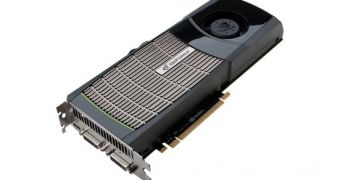NVIDIA's GeForce GTX 400-series graphics adapters have started selling, but they are accompanied by prices far higher than what NVIDIA suggested. This, combined with the products' low availability, led to the idea that TSMC 40nm yields were still weak, with rumors suggesting that they were only at 20%. More recently, however, Drew Henry, Nvidia general manager of MCP business, spoke in an interview about these rumors and denied any sort of issues with Fermi availability.
The arrival of NVIDIA's DirectX 11 cards was fraught with delays and insufficient supply, which ultimately led to the GF100 ending up with less processing cores than they were originally intended. Seeing the low availability of the cards even after the week of April 12 (and the aforementioned price points), market watchers and users alike started wondering what was going to happen next.
Meaning to quell yield rumors, NVIDIA agreed to an interview with Digitimes, wherein it stated that the yields met expectations. The company also made a point of mentioning how the GF100-based cards had an improved power consumption over performance, compared with the GTX 200 series, even though the actual power draw was a bit higher. Additionally, even though NVIDIA doesn't comment on unannounced products, the spokesperson did, at least, say that a 512 core-equipped chip might emerge in the future.
“Nvidia does not comment on unannounced products; however, we have a chance to launch a graphics chip with 512 cores in the future,” Mr. Drew Henry said. “TSMC's yields for its 40nm process has met our expectations and market rumors about the yields being lower than 20% are completely untrue. We currently have everything under control.”
“Our new Fermi-based GeForce GTX 480/470 chips are a significant improvement over performance compared to our previous-generation GTX 285 despite that the GTX 480/470's power consumption is about 15-20W higher. However, we believe consumers that choose to purchase GTX 480/470 are more focused on performance instead of how much extra watts they consume. To pay a little higher electricity bill in exchange for 10% more in performance, I believe consumers will think this is a worthwhile trade.”
The interview, unfortunately, does not say anything on how soon consumers can expect availability of the actual cards to improve. Still, there is one piece of good news, namely that, despite DRAM and other component prices rising, the Santa Clara GPU maker does not intend to raise MSRPs higher than they already are.

 14 DAY TRIAL //
14 DAY TRIAL //